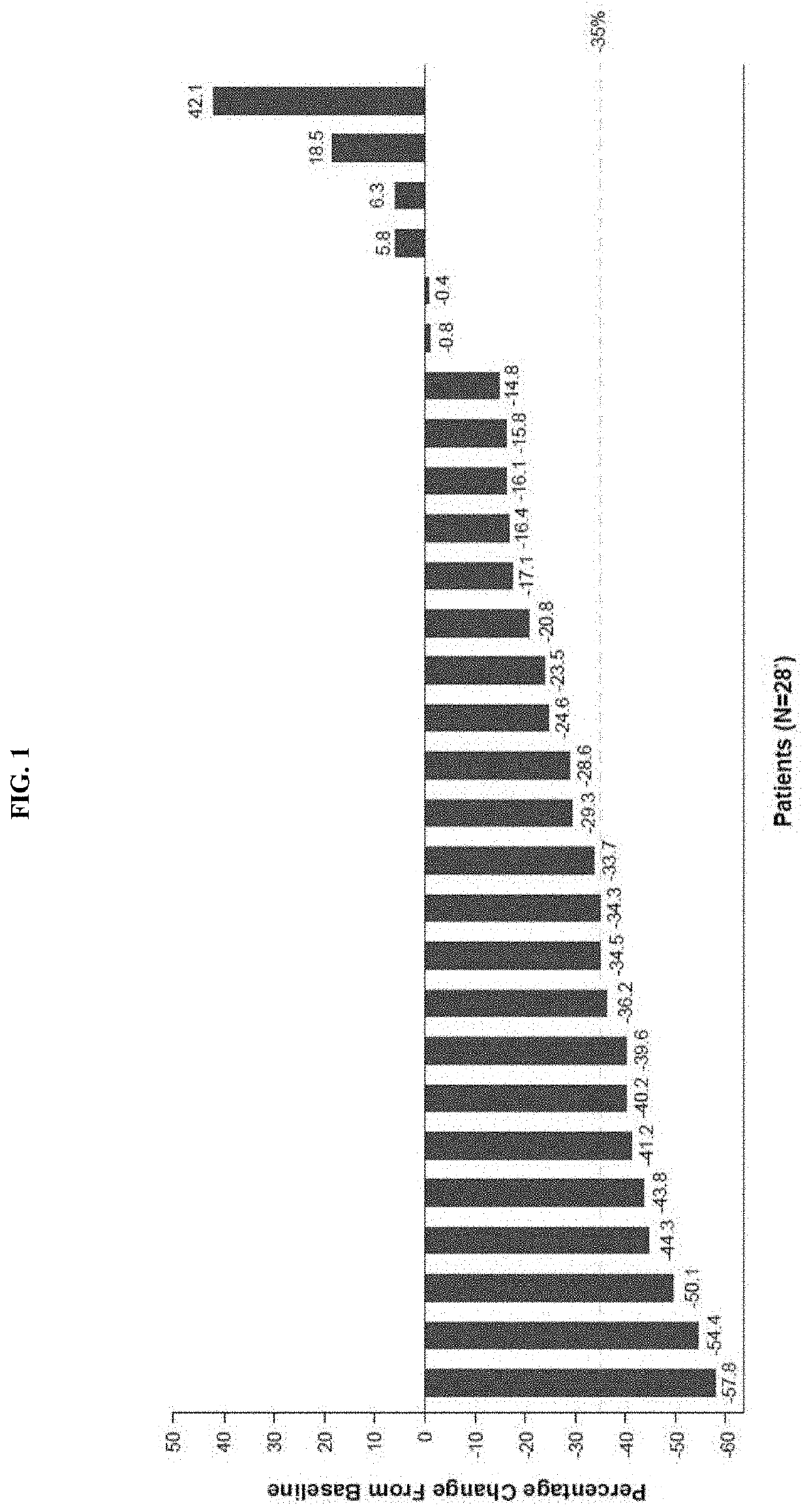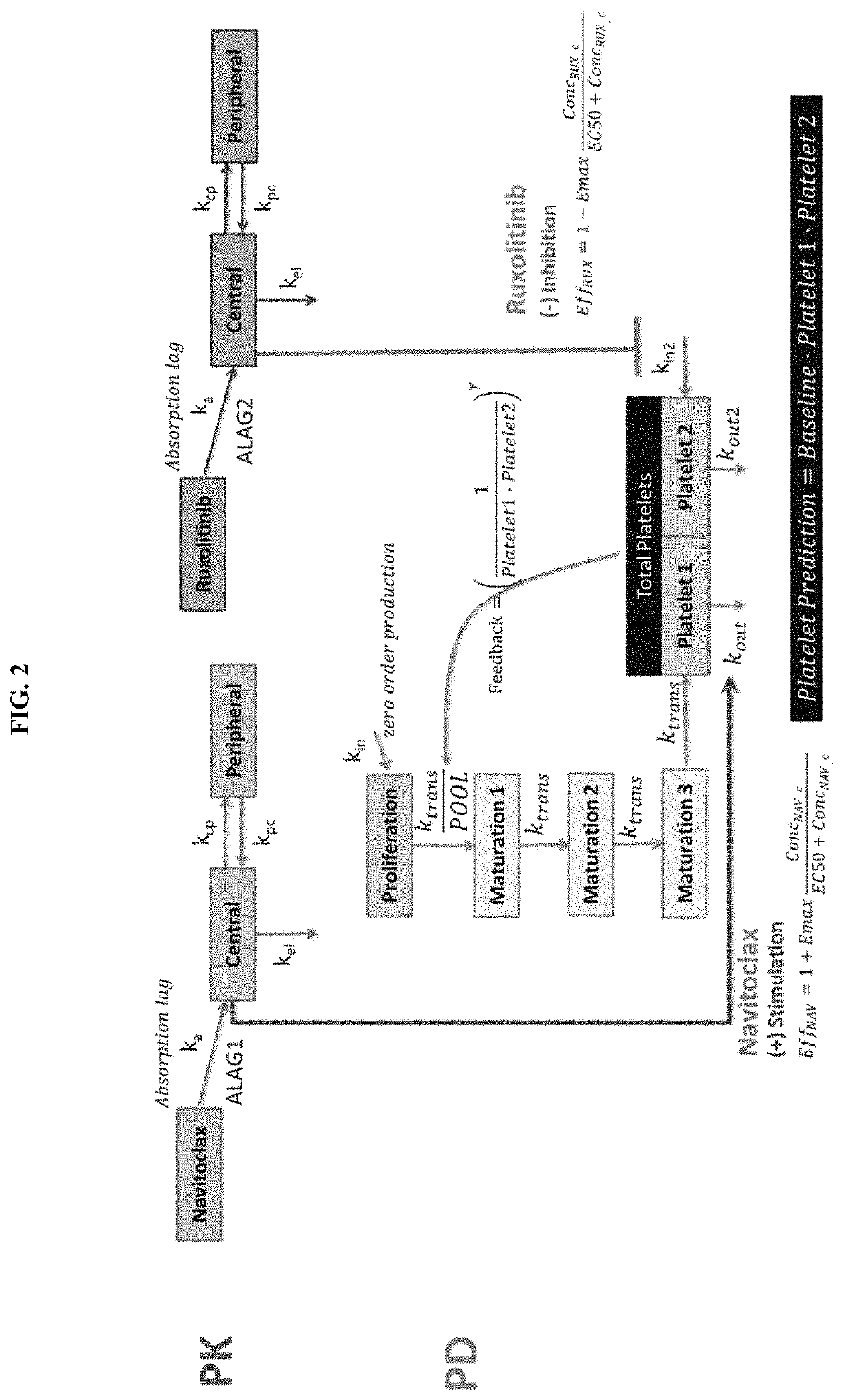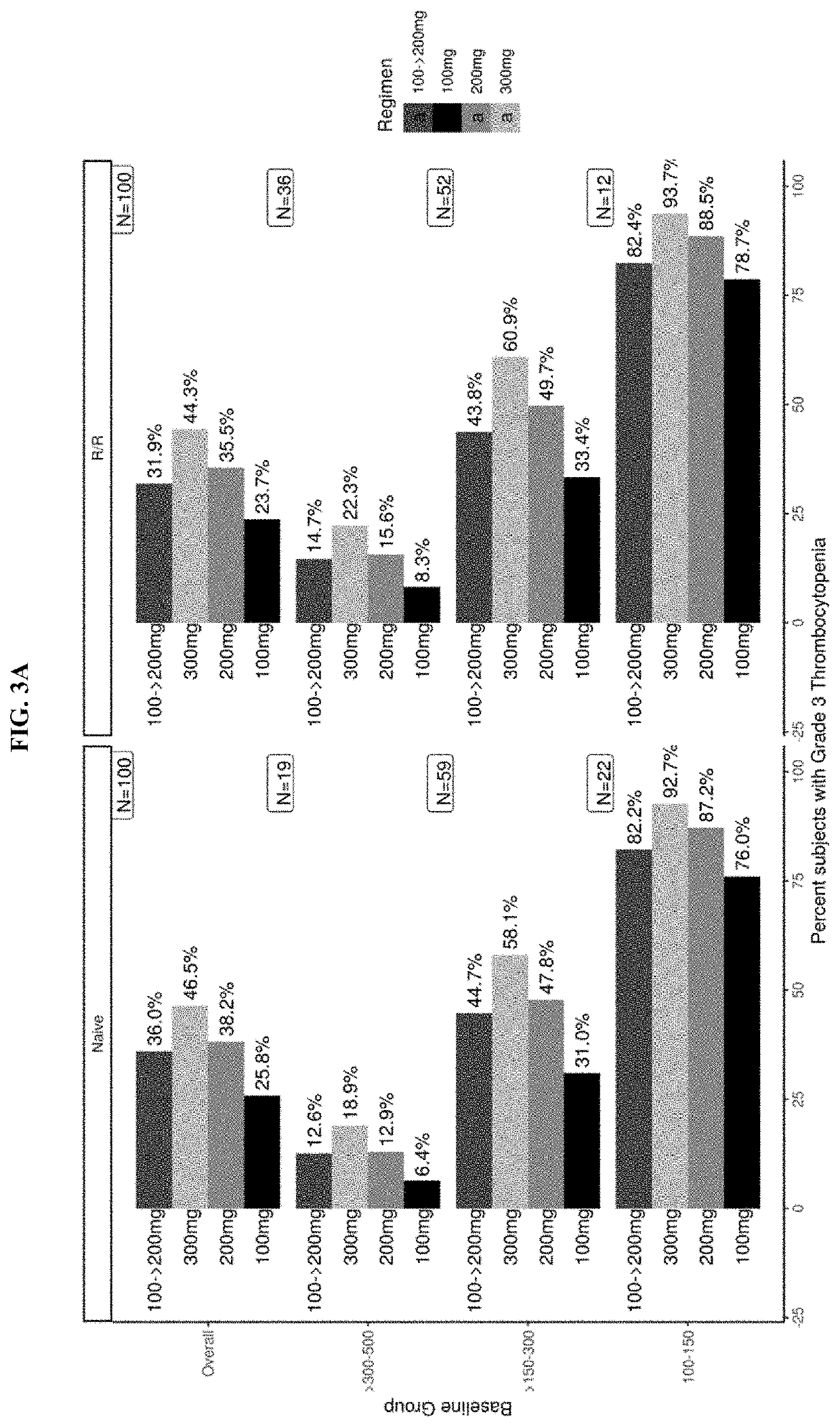Dosing regimens for use in treating myelofibrosis and MPN-related disorders with navitoclax
a technology of navitoclax and mpn, which is applied in the field of treatment methods of myelofibrosis and myeloproliferative neoplasm (mpn)related disorders, can solve the problems of increasing the risk of acute myeloid leukemia (aml), the host of symptoms and complications, and the effect of reducing the effect of the effective amount of navitoclax
- Summary
- Abstract
- Description
- Claims
- Application Information
AI Technical Summary
Benefits of technology
Problems solved by technology
Method used
Image
Examples
example 1
Phase 2 Study of Navitoclax in Combination with Ruxolitinib in Subjects with Primary or Secondary Myelofibrosis
Methods
[0408]This Phase 2 single-arm, multicenter, open-label study assessed the efficacy and safety of navitoclax combined with ruxolitinib in subjects with myelofibrosis (MF). Eligible subjects (≥18 years old, diagnosis of primary myelofibrosis, post-essential thrombocythemia (PET-MF), or post-polycythemia vera myelofibrosis (PPV-MF), Eastern Cooperative Oncology Group Performance Status (ECOG) 0-2, receiving at least 12 weeks of continuous ruxolitinib therapy prior to study treatment initiation) received a starting dose of 50 mg navitoclax once-daily combined with the current stable dose of ruxolitinib (≥10 mg twice a day (BID)). Weekly intra-subject dose-escalation of navitoclax was allowed based on tolerability and platelet count, first from 50 mg to 100 mg, then to 200 mg, up to a maximum daily dose of 300 mg. Treatment continued until the end of clinical benefit, una...
example 2
Dose Selection of Navitoclax and Ruxolitinib in Phase 3 Studies in Subjects with Myelofibrosis
Selection of Navitoclax Dose using Exposure-Platelet Response Modeling
Exposure-Platelet Response Model
[0449]A mechanistic model evaluating the effect of navitoclax and ruxolitinib on platelets counts was developed to guide navitoclax dose selection in Phase 3 studies (Examples 4 and 5 supra) in combination with ruxolitinib in MF. The model was based on established models described in the literature (Kaefer, A., Yang, J., Noertersheuser, P. et al. Cancer Chemother Pharmacol (2014) 74: 593. doi:10.1007 / s00280-014-2530-2530; and Friberg, Lena E., et al. “Model of chemotherapy-induced myelosuppression with parameter consistency across drugs. “Journal of clinical oncology 20.24 (2002): 4713-4721, both references hereby incorporated by reference in their entireties). The model was also used to perform simulations of the add-on effects of navitoclax at stable ruxolitinib dose. FIG. 2 shows the mod...
example 3
Extended Phase 2 Open-Label Study Evaluating Tolerability and Efficacy of Navitoclax Alone or in Combination with Ruxolitinib in Subjects with Myelofibrosis
Objective(s)
[0537]Building off Example 1, the primary objective of this study is to evaluate the effect of navitoclax alone or in combination with ruxolitinib on spleen volume reduction.
[0538]The secondary objectives of the study are: to assess the effect of navitoclax alone or in combination with ruxolitinib on total symptom score (TSS) as assessed by the Myelofibrosis Symptom Assessment Form (MFSAF) version 4.0 diary, to evaluate the effect of navitoclax alone or in combination with ruxolitinib on bone marrow fibrosis, to determine the rate of anemia response associated with navitoclax alone or in combination with ruxolitinib, and to describe the safety profile and PK profile observed with navitoclax alone or in combination with ruxolitinib.
[0539]The exploratory objectives of the study include but are not limited to the evaluat...
PUM
 Login to View More
Login to View More Abstract
Description
Claims
Application Information
 Login to View More
Login to View More - R&D
- Intellectual Property
- Life Sciences
- Materials
- Tech Scout
- Unparalleled Data Quality
- Higher Quality Content
- 60% Fewer Hallucinations
Browse by: Latest US Patents, China's latest patents, Technical Efficacy Thesaurus, Application Domain, Technology Topic, Popular Technical Reports.
© 2025 PatSnap. All rights reserved.Legal|Privacy policy|Modern Slavery Act Transparency Statement|Sitemap|About US| Contact US: help@patsnap.com



